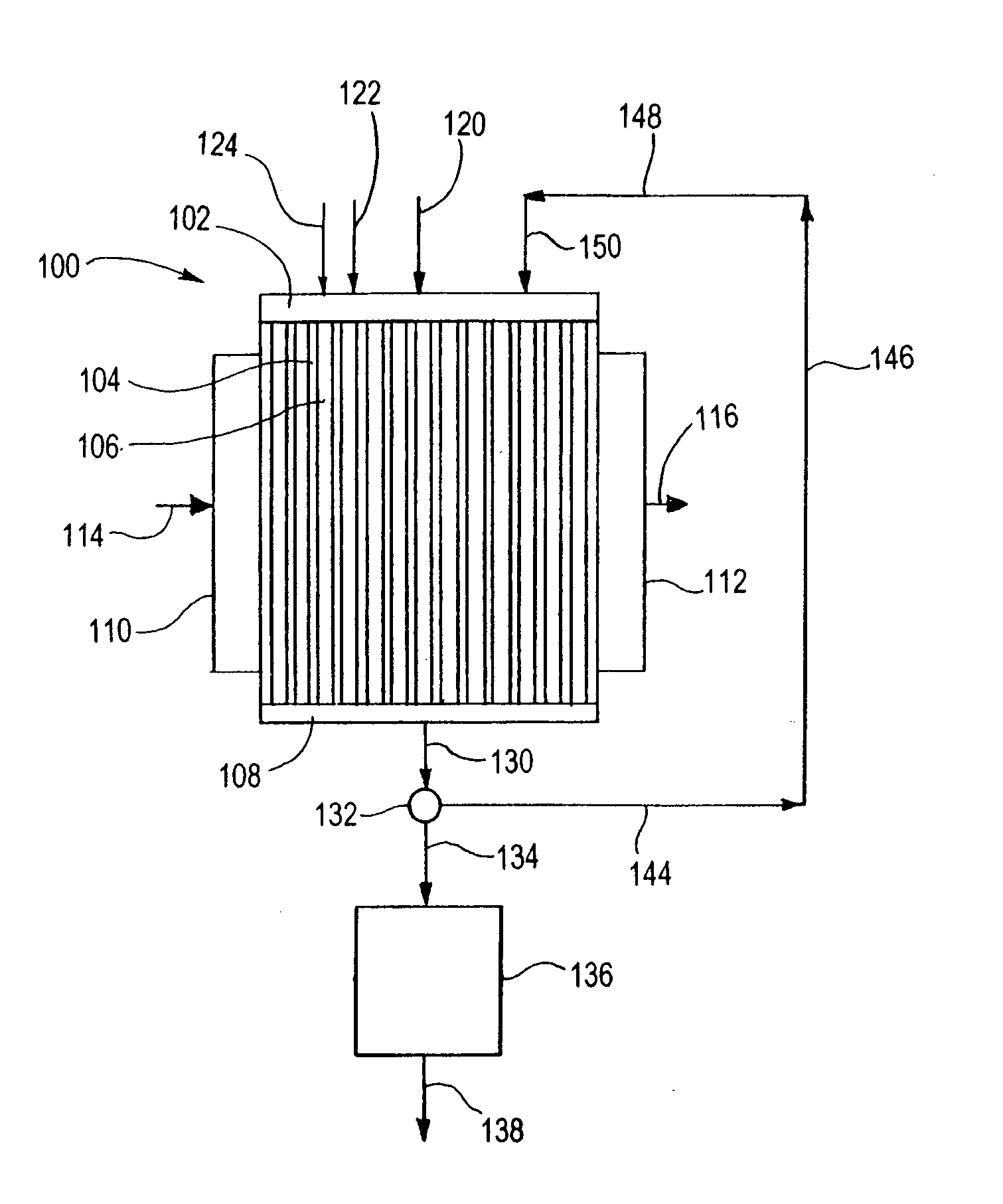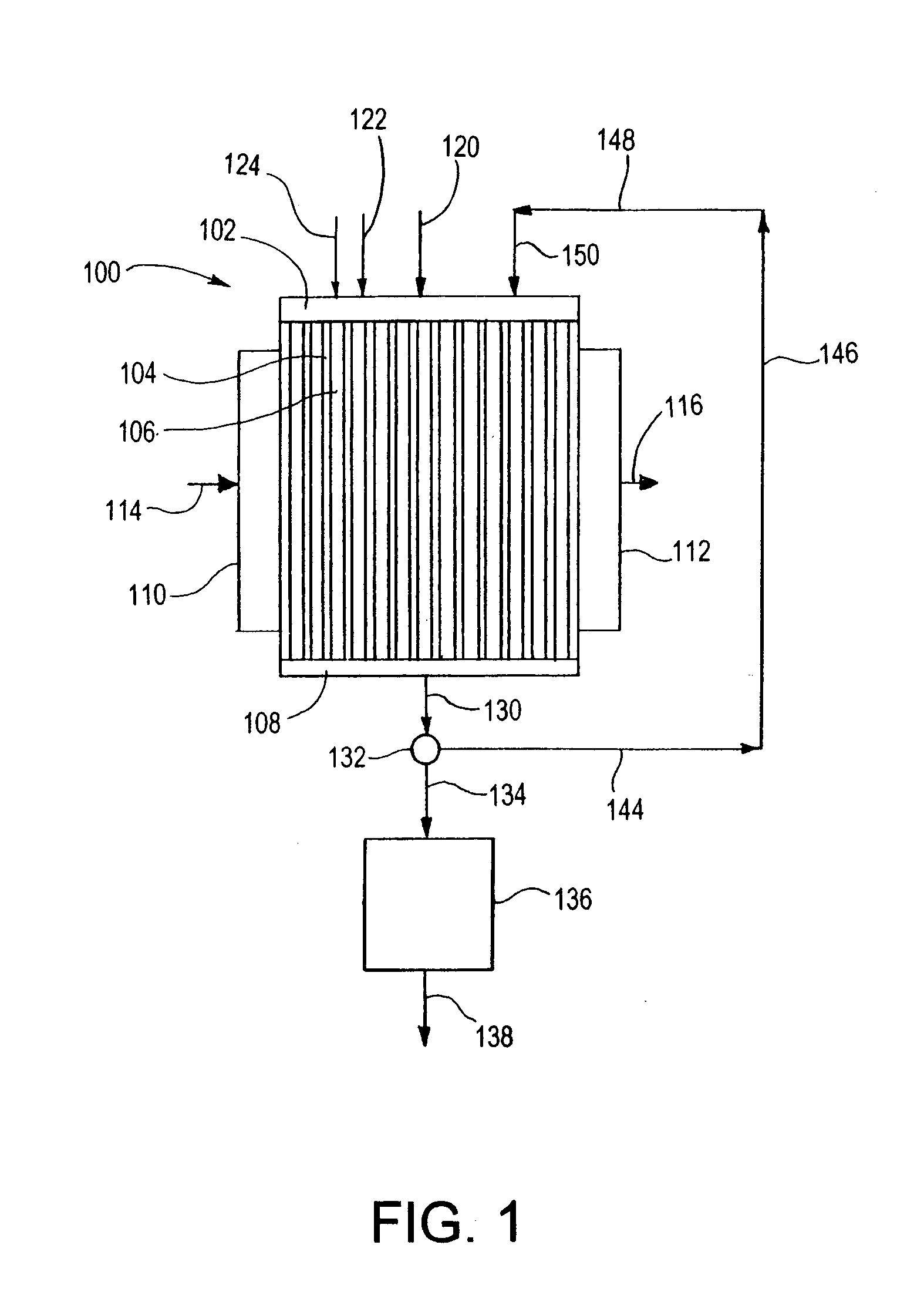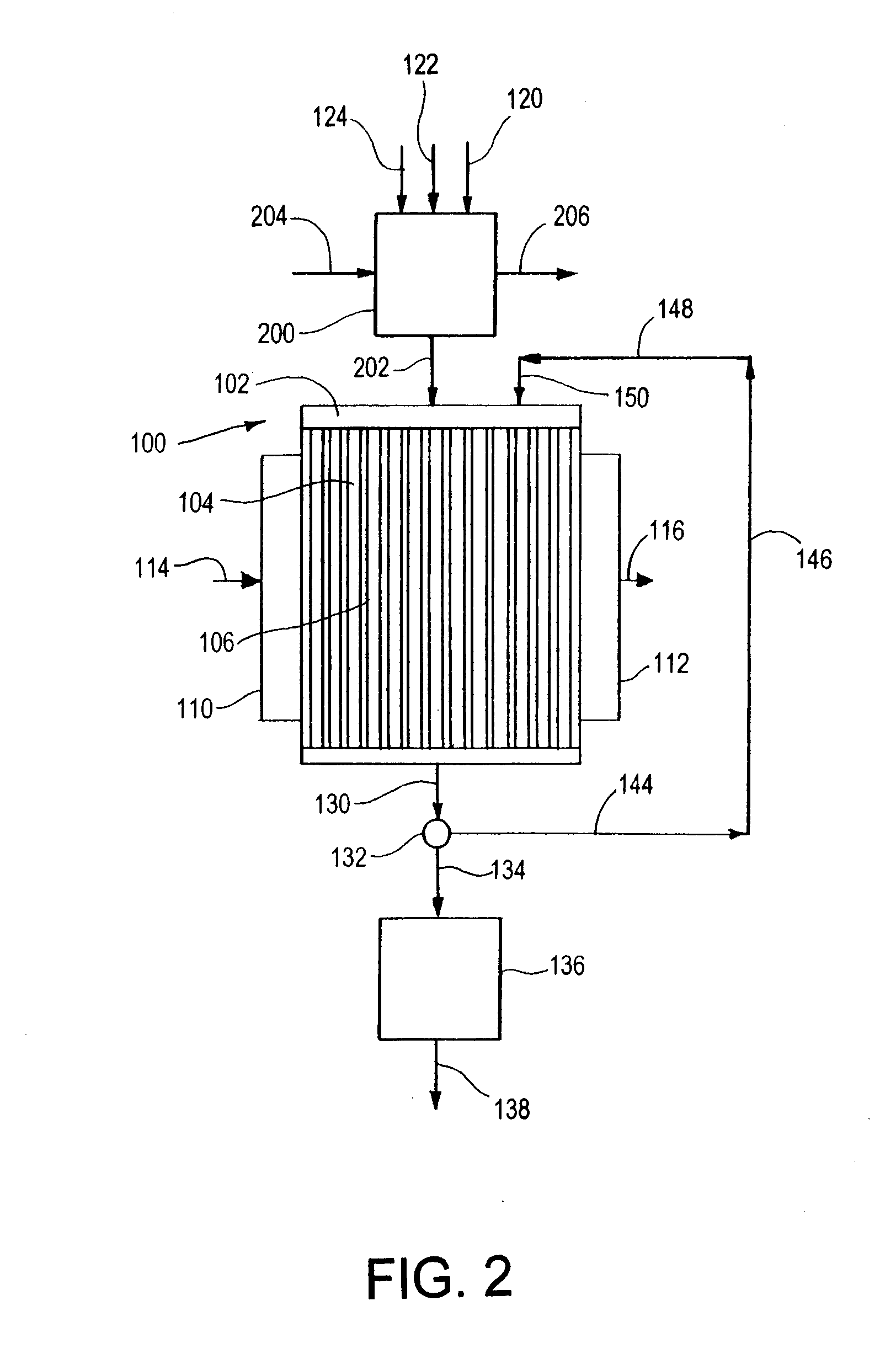Process for converting a hydrocarbon to an oxygenate or a nitrile
a technology of hydrocarbons and reactants, applied in the field of hydrocarbon reactants to oxygenates or nitriles, can solve the problem of low selectivity towards the desired main produ
- Summary
- Abstract
- Description
- Claims
- Application Information
AI Technical Summary
Benefits of technology
Problems solved by technology
Method used
Image
Examples
examples 1-8
[0146] In the following Examples 1-8, the reaction process illustrated in FIGS. 3A and 3B is used. The microchannel reactor 300 is fabricated from six distinct pieces: microchannel reactor core 301, reactant header 302, oxidant header 304, product footer 306, heat exchange header 310 and heat exchange footer 312. Each piece is fabricated from 316 stainless steel. Alternatively, other steel alloys, Inconel 617 or other nickel alloys, FeCrAlY or other high temperature alloys could be used. The reactant header, oxidant header and product footer have a common design and construction. The heat exchange header and heat exchange footer have a common design and construction. The headers and footers are formed by machining a pocket in a solid block using an end mill. Alternatively, the headers and footers could be fabricated via welding from standard pipe, or any method that is suitable to the material of construction and overall size of the device including stacking and bonding laminate she...
example 1
[0150] The hydrocarbon reactant is ethylene. The source of oxygen is air. The oxygen is mixed with the ethylene using staged addition, the volumetric ratio of air to ethylene when fully mixed being 86:14. The catalyst is an oxidation catalyst. The heat exchange fluid is Dowtherm A. The heat exchange fluid undergoes partial boiling in the heat exchange microchannels 380 and 390. The ethylene and air are preheated to a temperature of 100° C. The ethylene flows through header 302 into the reaction zones 342 and 352 of the process microchannels 340 and 350, respectively. The air flows through header 304 into oxidant microchannel 360. The air flows through oxidant microchannel 360 into orifices 370, and through orifices 370 into the reaction zones 342 and 352 where it mixes with the ethylene. The ethylene and air contact the catalyst and undergo reaction to form a product comprising acetic acid. The catalyst contact time is 50 ms. The product exits the reaction zones 342 and 352 at a tem...
example 2
[0151] The reactant composition contains a mixture of ethylene, acetic acid, water and nitrogen at a volumetric ratio of 50:20:1:21. The source of oxygen is oxygen. The oxygen is mixed with the reactant composition using staged addition, the volumetric ratio of the reactant composition to the oxygen when fully mixed being 92:8. The catalyst is an oxidation catalyst. The heat exchange fluid is Dowtherm A. The heat exchange fluid undergoes partial boiling in the heat exchange microchannels 380 and 390. The reactant composition and oxygen are preheated to a temperature of 100° C. The reactant composition flows through header 302 into the reaction zones 342 and 352 of the process microchannels 340 and 350, respectively. The oxygen flows through header 304 into oxidant microchannel 360. The oxygen flows through oxidant microchannel 360 into orifices 370, and through orifices 370 into the reaction zones 342 and 352 where it mixes with the reactant composition. The reactant composition and...
PUM
| Property | Measurement | Unit |
|---|---|---|
| width | aaaaa | aaaaa |
| temperature | aaaaa | aaaaa |
| temperature | aaaaa | aaaaa |
Abstract
Description
Claims
Application Information
 Login to View More
Login to View More - R&D
- Intellectual Property
- Life Sciences
- Materials
- Tech Scout
- Unparalleled Data Quality
- Higher Quality Content
- 60% Fewer Hallucinations
Browse by: Latest US Patents, China's latest patents, Technical Efficacy Thesaurus, Application Domain, Technology Topic, Popular Technical Reports.
© 2025 PatSnap. All rights reserved.Legal|Privacy policy|Modern Slavery Act Transparency Statement|Sitemap|About US| Contact US: help@patsnap.com



